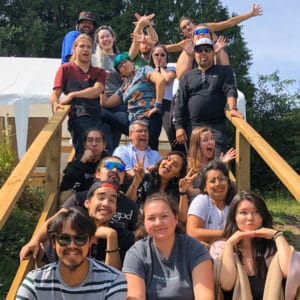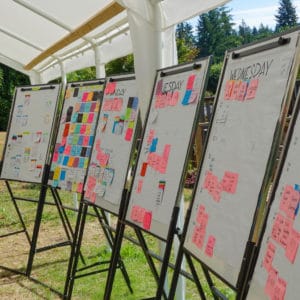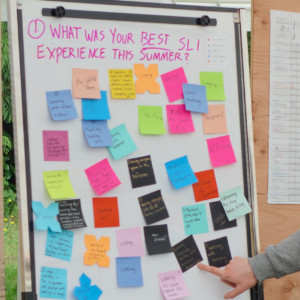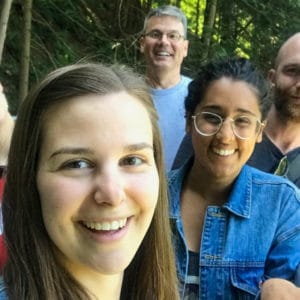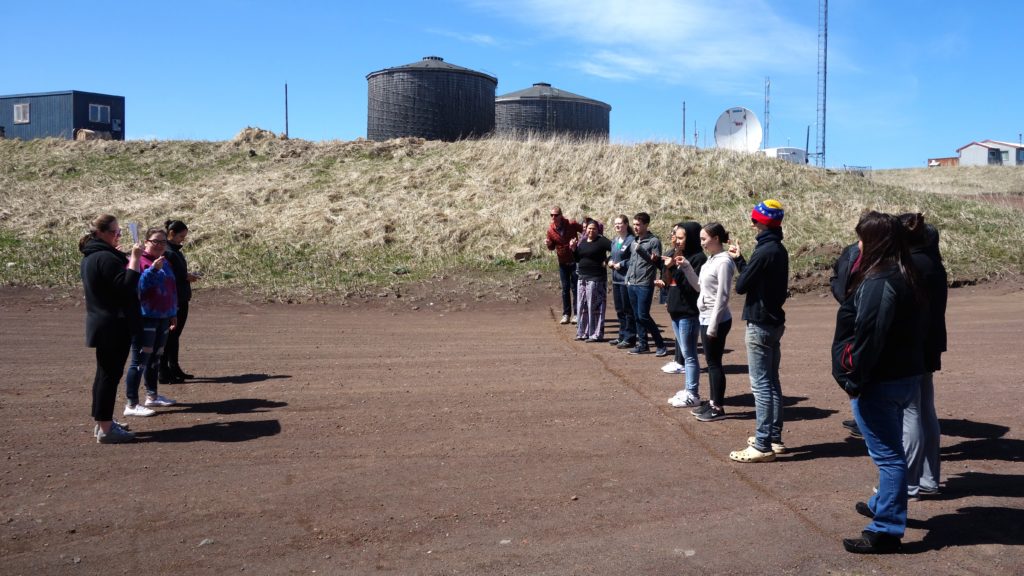 They say that for the person with a hammer, every problem looks like a nail. A few years ago I was formally introduced to community organizing, and yes, now I do see it as an answer to many conundrums. What about language revitalization? There are so many different approaches to it, including academic degrees and smartphone apps. The more I learn about the Where Are Your Keys approach, though, the more I see similarities between it and community organizing. This similarity is probably a big part of why it appealed to me.
They say that for the person with a hammer, every problem looks like a nail. A few years ago I was formally introduced to community organizing, and yes, now I do see it as an answer to many conundrums. What about language revitalization? There are so many different approaches to it, including academic degrees and smartphone apps. The more I learn about the Where Are Your Keys approach, though, the more I see similarities between it and community organizing. This similarity is probably a big part of why it appealed to me.
Three ways in which Where Are Your Keys looks like community organizing:
1) The core team comes first.
A temptation in community organizing is to take on lots of campaigns, try many tactics, and invite everyone to join right away. Likewise, there are countless places to begin in language revitalization. Do you start an immersion preschool? Start a radio show? Start a drop-in night for families? You might want to work on all the ideas at once. The challenge, though, is longevity. For longevity, you need a core team that can orient and support new community members who get involved later. Here in St. Paul I see a core team of people that have developed their experience and expertise in language revitalization to be able to envision and pursue new projects and also welcome and incorporate new people (including me!). The team seems stable enough to continue in some form, no matter what.
2) Your job is to work yourself out of a job.
If you are a community organizer, you may become the best canvasser ever – you can approach anyone with a pen and clipboard, have a tight conversation, and get a signature or donation or new volunteer. But your impact is pretty limited if all you do is canvass. You can increase your impact if you train three people to be solid canvassers. You increase your impact even more if you can train those three people to each train three other people. Suddenly you’ve got 12 other people canvassing, and three trainers developing new leadership skills. This distribution of leadership is way more important than your perfect canvassing technique. With WAYK, the goal is not just to get good at learning languages (though you will). It’s also to help others learn and to support other teachers. You can see this in the “techniques grid” with four spaces. After you “play” and “know” a technique, you are not done! You must “teach” your peers and “train” them to teach others. Who cares if you are really good at something? The goal is to bring everyone up, and work yourself out of a job.
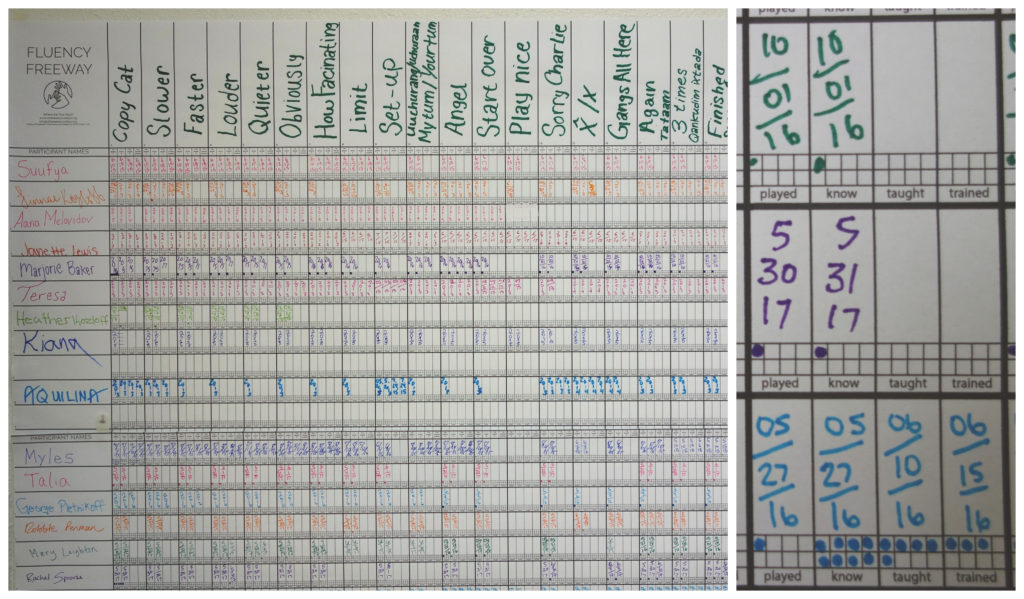
3) Relationships matter.
In a hierarchical organization, work can get done without good relationships. The person with more power can simply demand that the person with less power does something. The same thing can happen in a classroom between teacher and students. In community organizing, on the other hand, if an organizer neglects a relationship, the volunteer or community member will simply walk away. A two-way relationship is needed, in which people check in on each other’s goals, capacity, and well-being. Likewise, language team members here identify their own goals and groups goals, they ask about each other’s health, and throughout the day they indicate how “full” or overwhelmed, they are. Only when we feel good working together can we move forward smoothly.
I’m looking forward to the rest of the Summer Language Intensive here on St. Paul Island, and learning much more about the particular elements of the WAYK approach to language revitalization, through experience in the classroom, conversations, and my own reflections. Funnily enough, there is a copy here at the WAYK house of the Organize BC handbook– the first organizing literature that I was exposed to – so I can review and compare concepts throughout the summer.
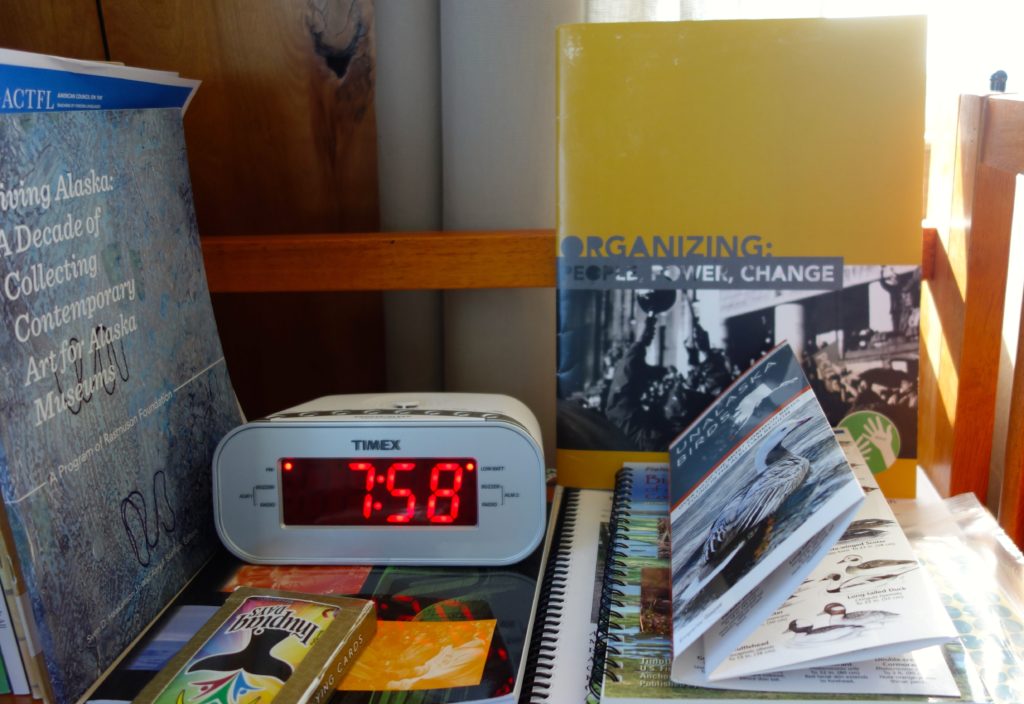
A related post, from all the way back in 2010, is Evan’s, “Learning a Language vs. Creating a Language Community.”
Post authored by Mary.

